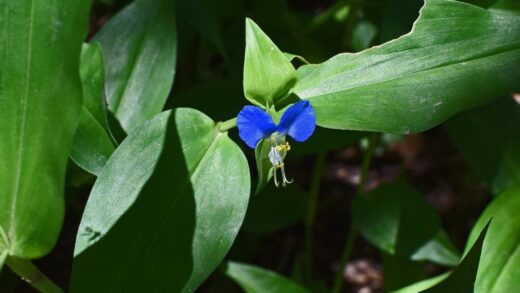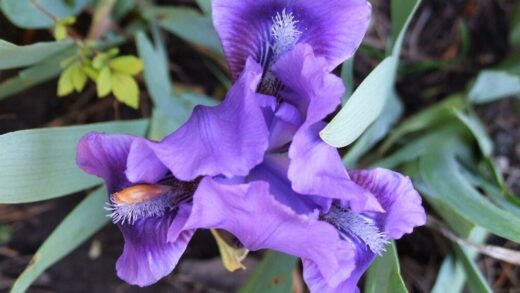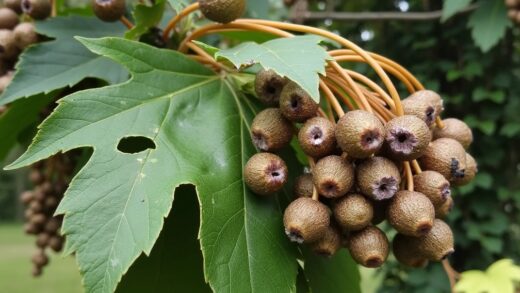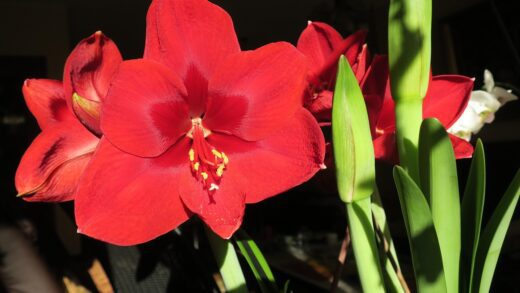The empress tree, scientifically known as Paulownia tomentosa, is a remarkably fast-growing deciduous tree prized for its large, heart-shaped leaves and spectacular spring display of fragrant, lavender-colored flowers. Originating from central and western China, it has become a popular ornamental tree in temperate regions worldwide due to its aesthetic appeal and rapid growth. Proper care is essential to manage its vigorous nature and ensure its health and longevity in the landscape. This involves a comprehensive understanding of its needs, from soil and water to pruning and pest management, to cultivate a magnificent specimen that enhances the garden without becoming unmanageable.
Understanding its fundamental requirements is the first step towards successful cultivation, as this tree has specific preferences that must be met. It thrives in deep, moist, but well-drained soils and can tolerate a wide range of soil types, including those that are nutritionally poor. However, its growth can be stunted in heavy, waterlogged clay soils which can lead to root rot and other health issues. The tree’s rapid development means it has a significant demand for resources, especially during its formative years, making careful site selection and preparation crucial for establishing a strong foundation for future growth and vitality.
The cultural significance of the Paulownia tree in its native China and Japan adds another layer to its story, where it is associated with good fortune and is traditionally planted when a daughter is born. The wood, being lightweight yet strong, would later be used to make furniture for her dowry, a testament to its fast maturation and utility. In a modern garden context, this rapid growth presents both an opportunity and a challenge, allowing for quick establishment of shade and structure but also demanding regular attention to maintain its desired size and shape. Its adaptability has allowed it to naturalize in many areas, which also highlights the importance of responsible cultivation.
Ultimately, caring for an empress tree is a rewarding experience that combines horticultural skill with an appreciation for its unique characteristics. While it is relatively low-maintenance once established, the initial years require diligent attention to watering, feeding, and structural pruning. By providing the right conditions and consistent care, you can enjoy the dramatic foliage and beautiful blooms of this majestic tree for years to come. It serves as a stunning focal point in larger gardens, providing a tropical feel with its oversized leaves and a burst of color in the spring that is truly unmatched.
Site selection and soil preparation
Choosing the right location is the most critical factor for the long-term health of a Paulownia tomentosa. This tree requires full sun exposure, meaning it needs at least six to eight hours of direct sunlight each day to flourish and produce abundant flowers. A sheltered position is also highly beneficial, as its large, soft leaves and brittle branches can be susceptible to damage from strong winds. Planting it away from buildings, power lines, and other structures is essential, given its rapid growth and large ultimate size, which can reach up to 15-20 meters in height with a similar spread.
More articles on this topic
Once a suitable sunny and sheltered spot is identified, preparing the soil is the next vital step. The empress tree prefers a loamy, well-drained soil with a slightly acidic to neutral pH, typically between 6.0 and 7.5. It is advisable to conduct a soil test to determine the existing pH and nutrient levels, allowing for any necessary amendments. Heavy clay soils should be amended with organic matter such as compost, well-rotted manure, or peat moss to improve drainage and aeration, which is critical for preventing root diseases. Conversely, very sandy soils will benefit from the addition of organic matter to enhance their water-retention capacity.
Digging a planting hole that is significantly larger than the root ball is crucial for providing the young tree with a good start. The hole should be at least two to three times the width of the container and just as deep, which allows the roots to spread easily into the surrounding soil without facing compaction. This practice encourages rapid establishment and a more extensive root system, which is vital for the tree’s stability and ability to absorb water and nutrients. Backfilling the hole with a mixture of the native soil and high-quality compost will provide the necessary nutrients for initial growth.
Before placing the tree in the prepared hole, it is important to inspect its root system. If the roots are circling the container, a condition known as being pot-bound, they should be gently teased apart or lightly scored with a knife to encourage them to grow outwards into the new soil. The tree should be positioned in the hole so that the top of the root ball is level with or slightly above the surrounding ground level. Planting it too deep can lead to collar rot and other stem issues, so careful placement is paramount for its long-term health and successful establishment in the garden.
Watering and nutrient management
Proper watering is especially important during the empress tree’s first few years of growth as it establishes its extensive root system. Young trees require consistent moisture, so the soil should be kept evenly moist but not waterlogged. A deep watering once or twice a week is generally more effective than frequent, shallow applications, as it encourages roots to grow deeper into the soil profile, making the tree more drought-tolerant in the long run. The exact frequency will depend on factors such as soil type, temperature, and rainfall, so it is best to check the soil moisture regularly by inserting a finger a few inches deep.
More articles on this topic
Once the tree is well-established, typically after two to three years, it becomes surprisingly drought-tolerant due to its deep taproot. However, during prolonged periods of drought or extreme heat, supplemental watering will still be beneficial to maintain vigorous growth and prevent stress, which can make the tree more susceptible to pests and diseases. A thick layer of organic mulch, such as wood chips or bark, applied around the base of the tree can significantly help in conserving soil moisture, regulating soil temperature, and suppressing weed growth. Ensure the mulch is kept a few inches away from the trunk itself to prevent moisture buildup against the bark.
In terms of nutrition, Paulownia tomentosa is not an overly demanding tree, but its rapid growth rate means it benefits from regular feeding, particularly when young. An annual application of a balanced, slow-release granular fertilizer in the early spring is usually sufficient to support its vigorous development. A fertilizer with an N-P-K ratio like 10-10-10 or 20-20-20 will provide the necessary nutrients for healthy foliage, strong root development, and abundant flowering. Always follow the manufacturer’s instructions for application rates to avoid over-fertilizing, which can harm the tree and the surrounding environment.
For those preferring an organic approach, amending the soil with well-rotted compost or manure annually is an excellent alternative to synthetic fertilizers. This not only provides a slow release of essential nutrients but also improves soil structure, drainage, and microbial activity, creating a healthier growing environment for the tree. Applying a thick layer of compost as a top dressing around the base of the tree in the spring will nourish it throughout the growing season. This method supports the tree’s health in a sustainable way, contributing to a robust and resilient specimen.
Pruning for structure and health
Pruning is a key aspect of caring for the empress tree, essential for managing its size, shaping its structure, and maintaining its health. The best time to perform major structural pruning is during the dormant season, in late winter or early spring, before the new growth begins. This allows you to clearly see the branching structure without the obstruction of leaves and minimizes stress on the tree. The primary goal is to establish a single, strong central leader and a well-spaced framework of scaffold branches, which will create a more stable and aesthetically pleasing tree as it matures.
When the tree is young, focus on removing any competing leaders to encourage the dominance of one main trunk. You should also remove any low-hanging branches that could obstruct pathways or interfere with maintenance activities later on. As the tree grows, periodically thin out the canopy by removing any branches that are crossing, rubbing against each other, or growing inwards towards the center of the tree. This improves air circulation and light penetration, which is crucial for reducing the risk of fungal diseases and ensuring all parts of the tree receive adequate sunlight.
A specific pruning technique often used with Paulownia tomentosa is coppicing or pollarding, which involves cutting the tree back hard to near ground level each year in late winter. This practice sacrifices the flowers but stimulates the production of extremely large, dramatic leaves, often reaching up to 60 centimeters in diameter. This method is ideal for gardeners who want to create a bold, tropical effect in their borders and can be an effective way to control the tree’s size in smaller gardens. The resulting vigorous shoots grow rapidly in a single season, providing a stunning architectural element.
Throughout the year, it is important to perform maintenance pruning by promptly removing any dead, damaged, or diseased wood as soon as you notice it. This can be done at any time and helps to keep the tree healthy and prevent the spread of potential pathogens. Always use sharp, clean pruning tools to make clean cuts that heal quickly. For larger branches, use the three-cut method to prevent the bark from tearing down the trunk, which can create a large wound that is slow to heal and susceptible to infection.
Managing growth and potential invasiveness
The rapid growth rate of the empress tree is one of its most defining characteristics, but it also necessitates proactive management to prevent it from becoming overwhelming in a garden setting. In optimal conditions, a young tree can grow more than 3-4 meters in a single season, quickly providing shade and a sense of maturity to the landscape. However, this also means that it can outgrow its allotted space if not carefully monitored and pruned regularly. Planning for its ultimate size at the time of planting is crucial to avoid future conflicts with buildings, utility lines, or other plants in the garden.
One of the most important management tasks is dealing with the tree’s prolific seed production. After flowering, the tree produces thousands of small, winged seeds enclosed in oval capsules, which can be dispersed widely by wind and water. This has led to Paulownia tomentosa being classified as an invasive species in some regions, particularly in North America, where it can outcompete native vegetation and disrupt local ecosystems. To prevent unwanted spread, it is highly recommended to remove the flower clusters after they have faded but before they set seed, a practice known as deadheading.
Another aspect of its vigorous nature is its ability to produce numerous root suckers, which are new shoots that emerge from the root system, often at a considerable distance from the main trunk. These suckers should be removed promptly as they appear by cutting them back to the ground level or, ideally, tracing them back to the source root and removing them completely. If left unchecked, these suckers can lead to the formation of a dense thicket, turning a single specimen tree into an unmanageable grove. Regular monitoring during the growing season is essential to keep this suckering habit under control.
Responsible ownership of a Paulownia tomentosa involves a commitment to containing its growth and preventing its escape into the wild. In addition to deadheading and removing suckers, consider planting it in a location where its spread can be naturally contained, such as a large lawn area where mowing can easily control any unwanted seedlings. By taking these proactive steps, you can enjoy the immense beauty of this unique tree without contributing to its potential as an invasive species, ensuring it remains a welcome feature of the cultivated landscape.
Overwintering and seasonal care
While a mature Paulownia tomentosa is quite hardy and can tolerate cold temperatures, young trees are more vulnerable to frost damage and require some protection during their first few winters. For newly planted trees, it is beneficial to apply a thick layer of mulch around the base in late autumn. This helps to insulate the root system from freezing temperatures and extreme temperature fluctuations, providing a more stable environment for the dormant roots. The mulch should be several inches thick and spread out to the dripline of the young tree.
In colder climates where temperatures regularly drop significantly below freezing, protecting the main trunk of a young tree can prevent frost cracking, a condition where the bark splits due to rapid temperature changes. Wrapping the trunk with a commercial tree wrap or burlap can provide the necessary insulation. This protection is most critical during the first two to three years after planting, by which time the tree will have developed thicker bark and a more extensive root system, making it much more resilient to winter conditions. This wrap should be removed in the spring to allow the bark to breathe.
During the dormant season, it is also a good time to inspect the tree for any structural issues or damage that may have occurred during the previous growing season. With the leaves gone, it is much easier to spot any broken or weak branches that should be removed. Late winter is the ideal time for this type of structural pruning, as the tree is dormant and the risk of disease transmission is low. This also prepares the tree for the upcoming spring growth spurt, directing its energy into developing a strong and healthy framework.
As spring approaches, it is time to prepare the tree for the new growing season. The winter protection, such as tree wrap, should be removed as the weather warms up. It is also a good time to gently rake back the old mulch to allow the soil to warm up and to apply a fresh layer of compost or a balanced fertilizer to provide the necessary nutrients for the initial burst of growth. This cycle of seasonal care ensures that the tree remains healthy, vigorous, and well-prepared for the challenges and opportunities of each phase of the year.


















